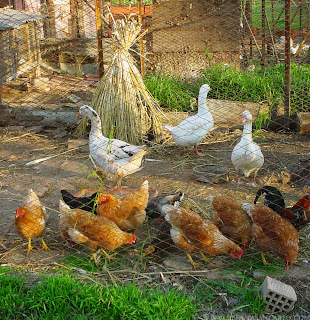A poultry business entrepreneur can
consider the different types of poultry in order to expand the operations in a
larger scale. With that, not only chicken eggs are being sold, there will be
possible variations as well. If you have been operating a poultry business for awhile
and you want higher chances of growth, you can consider growing other fowls
too. This will enable you to earn more profits as you go and learn how to grow
other breeds and know the right poultry supplies the go with it.
Chicken
Chicken, of course, is the most
common breed where you can sell the meat for food or breed a group for eggs.
There are different kinds of chickens. The broiler-fryer ones are 7 weeks old
and weighs about 2-3 pounds. The Rock Cornish hens are bred for cooking, either
stuffed or roasted. Roasters are older kinds with age of 3-5 months and are
usually roasted whole. The capons are male chickens known for their light meat
and the stewing or baking hens are great for moist cooking. The roosters are
male chickens with coarse skin and are more prepared by longer cooking methods.
Duck
Ducks are in-demand for their
flavorful meat. The fryer ducklings are young ducks, aged less than 2 months,
with tender meats. Roaster ducklings also have a tender meat but are aged older
than the younger breed, which is less than 4 months. Mature ducks are not able
to lay eggs so their meat usually is sold for processed foods.
Game Birds
Game birds are also known as the
wild ones. These are groups of different species being domesticated for
different purposes. The game birds include wild ducks, turkeys, goods, partridges,
pheasants, quails, ratites, pigeons and many more. The game birds are sold for their meats, often
to specialty restaurants. Wilde ducks are usually sold in Chinese restaurants
to cook Peking duck recipes. Quails are cooked as a whole but their eggs are
also sold as an ingredient for many dishes.
These are the other breeds that
you may consider aside from chickens. The type of poultry supplies usually is
just the same with breeding chickens. Know more about the other opportunities
of your poultry business by visiting http://poultrysupplies.org/.



